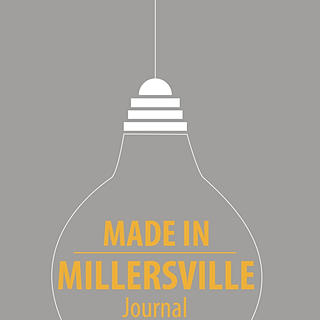A Guide to APA
- MiM Journal
- Feb 23, 2020
- 3 min read
Whether you’re submitting an academic style article or a commentary on a creative piece, the requirements for your references and in-text citations will need to be in APA Style. As someone who is more acquainted with MLA and AP Style, I often find myself struggling a little with papers that involve APA. Additionally, APA format is also most commonly used for academic journals, so having this practice may help you if your future is headed down a path in academia. Therefore, I felt it would be important to create a simple guide for you, the author, to use. On our website under “How To Publish”, our team offers a list of options to look to for additional APA help. In this post, I’m going to condense a lot of that to make it easier than clicking through links; however, if you click here you’ll find the Made in Millersville Journal guide to formatting your paper in APA as a whole (note: we are using the 6th edition).
Let’s begin with how to cite your sources in-text. The most common type of citation you’ll use is the basic citing at the end of a sentence of paraphrased/summarized information with citation information in parentheses. This is very similar to the MLA format.
For example, an APA Style citation should begin with the author’s last name followed by the publication date in parentheses at the end of your sentence (Purdue OWL, 2019). This would be the first option for citing your sources in-text. If you already state the author's name in your sentence, then you only need to include the date in the parenthesis.
Moving forward, you might run into needing to include quotes from your sources in your paper. The format for that is a little different. The Purdue OWL guide covers the difference of what they consider “long” and “short” quotes and the differences in formatting them in a paper.
Short quotations are set up very relatively simply. I have pulled the following examples from the Purdue OWL webpage:
According to Jones (1998), "Students often had difficulty using APA style, especially when it was their first time" (p. 199).
Jones (1998) found "students often had difficulty using APA style" (p. 199); what implications does this have for teachers?
You’ll notice that with this type of citation, it maintains a sentence-type structure that will flow with the rest of your paper. Longer quotes will need to be set up much differently than this. They’ll require breaks in your paper separate from the paragraphs that come before and after the quote. The following example is pulled from the Purdue OWL web page:
Jones's (1998) study found the following:
Students often had difficulty using APA style, especially when it was their first time citing sources. This difficulty could be attributed to the fact that many students failed to purchase a style manual or to ask their teacher for help. (p. 199)
Finally, make sure your reference page follows APA guidelines. How your references should be set up will differ based on what format your sources are in, i.e. books, magazines, journals, webpages. Your reference page should also be its own page at the end of your research with “Reference” as the title and your sources following in alphabetical order. The following examples for setting up your references are from Purdue OWL covering the format for the various types of sources:
For books,
Author, A. A. (Year of publication). Title of work: Capital letter also for subtitle. Location: Publisher.
For electronic sources,
Author, A. A. & Author B. B. (Date of publication). Title of page [Format description when necessary]. Retrieved from https://www.someaddress.com/full/url/
These two formats are the main types that you’ll use. If your sources don’t fit into these very well, try clicking here for citation formats for other types of print sources or here for other types of online sources.
I hope that you were able to find useful information in this post regarding APA Style citations. If you still are having issues with APA, feel free to contact us or check out the Purdue OWL page on APA. This is where I found the information for this post and will be citing it in APA style at the end of this post.
If you would like to help us out and provide useful feedback, click here! We also encourage you to comment below with any questions!
References
n.a. (2019). APA Style Introduction. Retrieved from https://owl.purdue.edu/owl/research_and_citation/apa_style/apa_style_introduction.html







Comments